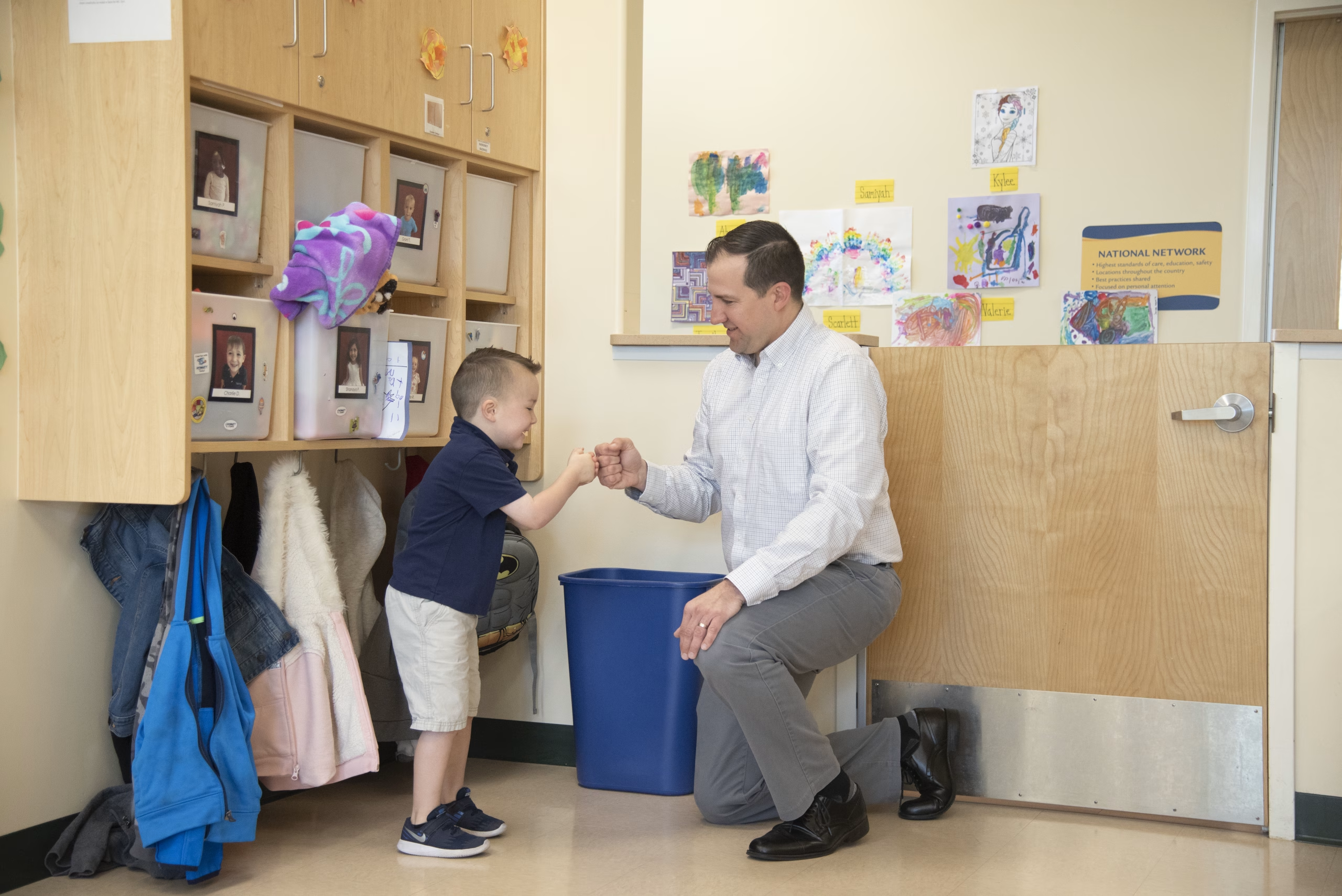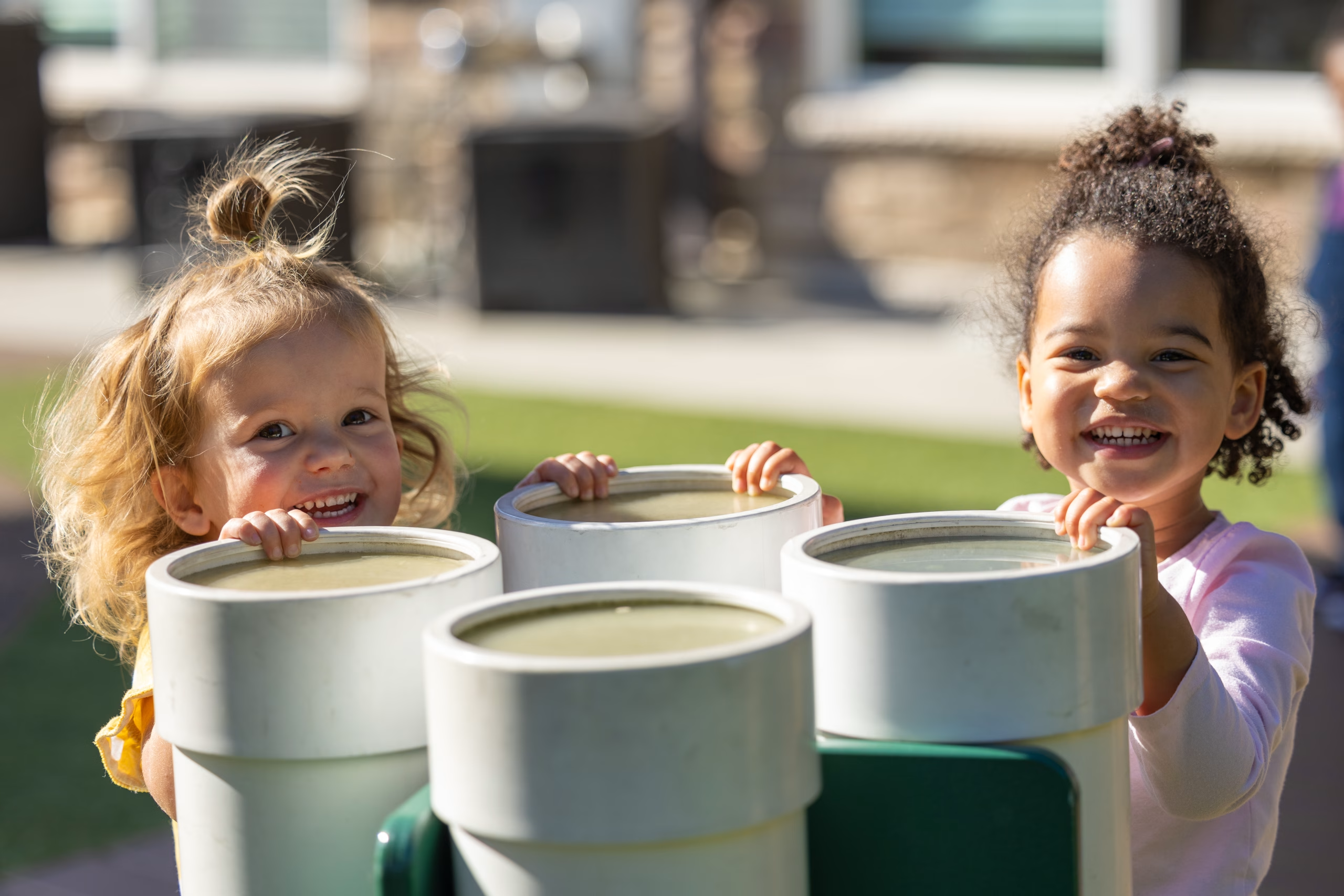
At Kiddie Academy® Educational Child Care, we like to say, “Community begins here.” We could also say it in Spanish – “Comunidad comienza aquí” – and mean the same thing.
If you were raised in a household or area where English was the primary language, you may wonder why your child might need to learn Spanish. Well, consider this: More than 43 million people in the United States (roughly 13% of the population) speak Spanish as a first language. Next to Mexico, we are the second largest Spanish-speaking nation in the world, and some predict we’ll be the largest by 2050.

Childhood is the best time to learn a new language
In addition to narrowing the communication gap, there are other developmental benefits your child can gain from learning Spanish and other languages. “The acquisition of language is essential to a child’s cognitive and social development,” said Richard Peterson, CFE, a member of the Kiddie Academy Curriculum Advisory Board.
Peterson said that in preschool settings, such as Kiddie Academy® Educational Child Care, “children are learning English as their primary language. But many programs are enhancing instruction by introducing a second language. We integrate ‘Everyday Spanish’ naturally into the themes, units and lessons. We use theme-related vocabulary words which are modeled in Spanish. We’ve incorporated Spanish into our daily activities so that children will see the Spanish language not as something that is isolated or foreign; rather, it’s a way to enhance and reinforce what they’re already learning.
“It’s much easier to begin learning a new language at an early age than trying to learn as one gets older, because the brain is still developing,” Peterson noted. “Learning a new language, such as Spanish, helps stimulate curiosity and makes one more receptive to learning in other areas. From a social and emotional aspect, children who learn a second language tend to display more empathy toward others and are especially more receptive to other cultures and experiences.”
The benefits of being bilingual
The National Association for the Education of Young Children (NAEYC) also points to the benefits learning a second language has for children. They say learning a second language boosts problem-solving, critical-thinking and listening skills, in addition to improving memory, concentration and the ability to multitask. Children proficient in other languages also show signs of enhanced creativity and mental flexibility. And being multilingual also tends to increase earning potential throughout adulthood.
What can you do at home to help your child learn Spanish and/or other languages?
“The good news here is that parents don’t need to be bilingual to help their child learn a new language,” said Kiddie Academy Vice President of Education, Joy Turner. She offers the following tips for helping to introduce a new language:
- Visit the library as a family to find books to check out and read repetitiously. We know children learn through play and repetition.
- Search the internet for nursery rhymes in different languages.
- Expose children to different types of music in different languages.
- Learn simple words that children use every day and introduce those vocabulary words. Ideas for words could be manners (please, thank you) counting, colors, objects and feelings.
- Look for cultural events in your community to take part in. These events provide great opportunities to reinforce cultural differences within your community and the world.
There are many resources on the internet for parents to use, including nursery rhymes, books, music and videos in various languages. As always, please preview all materials before sharing with your child.
Turner said, “Learning new languages can stimulate children’s natural curiosity, helping them understand that everyone is special but also different. This exposure to multiple languages leads to cultural sensitivity, tolerance and empathy, helping us all grow a little closer together.”
Sources:
1How Many People Speak Spanish and Where Is It Spoken? – Babel.com Magazine
Looking for more news you can use?
We would love to send you our free monthly newsletter, Parenting Essentials! You’ll receive a newsletter by email, full of parenting advice, ideas and information, as well as articles about emerging trends in educational child care.





